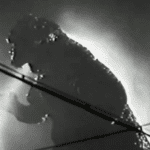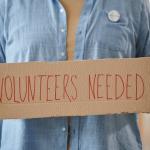
(Public domain photo from Wikimedia Commons)
I’m late in calling attention to this brief article, which went up on the website of the Interpreter Foundation on Friday, 5 May 2023: “Interpreting Interpreter: A Dark Mark,” written by Kyler Rasmussen.
This post is a summary of the article “Understanding the Lamanite Mark” by Clifford P. Jones in Volume 56 of Interpreter: A Journal of Latter-day Saint Faith and Scholarship. An introduction to the Interpreting Interpreter series is available at https://interpreterfoundation.org/interpreting-interpreter-on-abstracting-thought/.
The Takeaway: Jones argues that descriptions of the Lamanites’ dark skin may be best explained as sacrilegious tattoos prohibited by the Law of Moses, potentially aligning with a common Mesoamerican practice and with how the wording used in the Book of Mormon would have been understood anciently.
***
Some time ago, my friend Tom Pittman passed on a link to me — to an article in MarketWatch entitled “Rise in middle-aged white ‘deaths of despair’ may be fueled by loss of religion, new research paper argues” — that I have been delinquent in sharing. Very plainly, it comes from the Christopher Hitchens Memorial “How Religion Poisons Everything” File™:
It appears that so-called “deaths of despair” — such as those from suicide or alcohol abuse — have been skyrocketing for middle-aged white Americans. This spectacular increase has been blamed on various factors, including opioid abuse. But a still relatively new research paper identifies a different potential cause — the concurrent decline in religious practice. The paper in question — “Opiates of the Masses? Deaths of Despair and the Decline of American Religion” — was written by Tyler Giles of Wellesley College, Daniel Hungerman of the University of Notre Dame, and Tamar Oostrom of The Ohio State University, and is available on a website of the National Bureau of Economic Research.
Giles, Hungerman, and Oostrom look at the relationship between religiosity, on the one hand, and mortality from deaths of despair on the other.
They note that many measures of religious adherence began to decline in the late 1980s — and that that large decline in religious practice happens to have been driven by the very same group that is experiencing the subsequent increases in mortality: white middle-aged Americans without a college degree. Moreover, states that experienced larger declines in religious participation over the last fifteen years of the twentieth century also saw larger increases in deaths of despair.
Against attempts to blame the epidemic of opioid abuse as the principal driver of the increase in middle-aged white mortality, they observe that OxyContin was first introduced as a prescription drug only in 1996, by which time deaths of despair for middle-aged white Americans were already well above what statistical trends would have suggested.
How did the authors measure religious participation? They looked, in particular, at the repeal of “blue laws.” What are “blue laws”? They are laws that limit commerce, typically on Sunday mornings. “These laws,” the authors report, “have been shown to be strongly related to religious practice, creating discrete changes in incentives to attend religious services that are plausibly unrelated to other drivers of religiosity.”
According to their data, the repeal of blue laws had a five- to ten-percentage-point impact on weekly attendance of religious services, and they argue that this seems to have increased the rate of deaths of despair by two deaths per 100,000 people — thus accounting for a “reasonably large share of the initial rise in the deaths of despair.”
The impact on the middle-aged white male mortality rate seems to be driven by actual formal religious participation, rather than only by belief or by personal activities like prayer. “These results underscore the importance of cultural institutions such as religious establishments in promoting well-being,” say Giles, Hungerman, and Oostrom.
They add, further, that they are aware of no other cultural phenomenon that matches the mortality patterns, which are seen primarily for middle-aged, less-educated white individuals but also appear (admittedly with reduced clarity) in the data women in both rural and urban settings, but not in other countries.
“The decline in religiosity matches mortality trends in all these characteristics,” they maintain.
Dr. Lynn Johnson has also kindly shared materials with me from the apparently inexhaustible Hitchens File™ on the correlation between religion and health, and I’ve fallen behind on noting these. Here’s one of them: “For Boosting Self-Control, the Research Is Clear: Nothing Beats Religious Belief: Fascinating though seldom-drawn-upon research from the field of psychology has demonstrated the unique power of religious belief in fostering self-control”
The full academic article on which the shorter piece is based is “Religion Replenishes Self-Control,” Psychological Science 23/6 (May 2012): 635-642, written by Kevin Rounding, of Defense Research and Development Canada; Albert Lee, of Nanyang Technological University; and Jill A. Jacobson and Li-Jun Ji , of Queen’s University.
Framed, conceptually speaking, in terms of evolutionary psychology and on the basis of no discernible religious commitments, the study’s findings (in the authors’ own words) “offer strong and direct evidence for the replenishing effect of religious concepts on self-control.” “Religious beliefs refuel self-control resources,” they write, and “may provide important psychological ‘nutrients’ necessary for a variety of socially beneficial behaviors.”
“It was religious terms alone that did the heavy lifting,” says the brief summary article, and the results were “striking.” “It wasn’t just that religious concepts had some kind of effect, perhaps tenuous or minor. It was a sizable effect—huge, even.”
In the first experiment, which involved subjects’ ability to exercise willpower (in this case, by “enduring discomfort” in the form of drinking an intentionally repulsive vinegar-and-orange-juice concoction of the researchers’ own making!), those who were “primed” with religious concepts did 91 percent better than those in the control group. (To clarify, “priming” means surreptitious exposure to certain words—like “God” or “the divine”)
That’s almost double the strength of will, from just a moment’s exposure to a sacred term or concept.
The subsequent experiments similarly bore out the positive power of religious terms, such as when measuring subjects’ ability to delay gratification (another form of self-control) and work away at an impossible puzzle after having first been, by design, mentally “depleted.”
In these two experiments, those being exposed to religious terms did 76 percent and 70 percent better, respectively.
And here’s a really surprising result:
[P]erhaps most incredibly, . . . the participants represented a wide swath of beliefs and religious backgrounds—ranging from Catholics and Protestants to Buddhists, Muslims, and atheists as well as agnostics. The latter two, in fact, made up 34 percent of participants in each of the [four] experiments.
In other words, the observed effects weren’t just a reflection of participants’ firm religious beliefs or prior commitments.
Just the opposite, in fact, “the pattern of results did not vary with religious affiliation in any of the studies,” the researchers observed. “Moreover, results for religious and nonreligious participants showed the same pattern.”
To put that in other terms, even a self-avowed atheist would experience a near doubling of fortitude or self-control just by being unknowingly exposed to a term like “spirit” or “God.”
Moreover, in view of this appalling additional item from the Hitchens File™, the Church of Jesus Christ of Latter-day Saints has a very great deal to answer for: “Why Latter-day Saints and mainline Protestants have the highest social capital rates: A new AEI report explores how Latter-day Saint doctrine and Protestant cultural relevancy matter”
But even that horror by no means exhausts the ongoing tale of crime and depravity that is chronicled in the Hitchens File™. Consider, for instance, this collection of infamies: “Relief Society in Action: May 2023: Members celebrate Relief Society’s anniversary and International Women’s Day”
Finally, something that comes from at least the vicinity of the Hitchens File™: My friend Bahman Baktiari published an interesting piece in today’s edition of the Deseret News. A central figure in it is Dr. John A. Widtsoe, who eventually served as a member of the Quorum of the Twelve Apostles of the Church of Jesus Christ of Latter-day Saints from 1921 until his death in 1952: “Opinion: Despite political tensions, Iran’s bond to Utah goes back over a hundred years: It all started at a Utah State University graduation ceremony”













